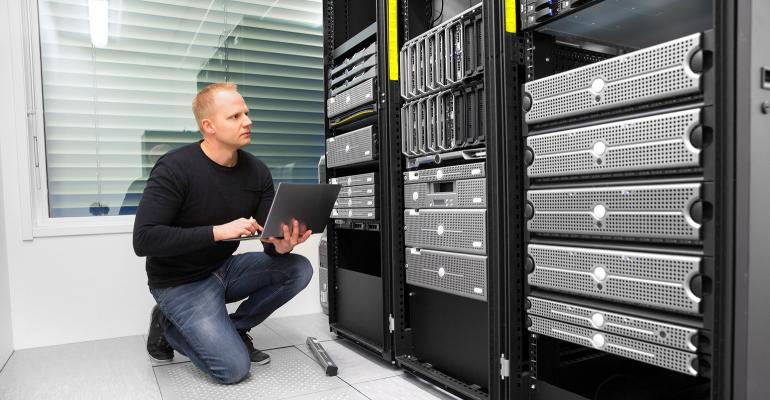Smart building monitoring devices are nothing new. You need not be a futurist to know it's now possible to collect a wealth of information from sensors within buildings, then analyze it for a variety of purposes.
But how, exactly, can data centers benefit from building monitoring? Which use cases is building monitoring analytics for data centers best suited to address?
To unpack those questions, let's look at the current state of building monitoring for data centers and the ways that data center operators can put them to use.
What Is Building Monitoring Analytics for Data Centers?
In a data center, building monitoring analytics means using technology such as networked sensors and edge devices to collect and understand data about what's happening inside a facility.
With building monitoring analytics, data center operators can efficiently collect information that would be much harder to collect by hand. They can track when people come and go using door sensors, for example, or monitor the temperatures within their data centers in a highly granular way.
Top Use Cases for Data Center Building Monitoring Analytics
Those are just a couple of examples of how data center operators can benefit from building monitoring analytics. Here's a more complete list of major use cases for monitoring analytics solutions inside modern data centers:
- Temperature monitoring
- Humidity monitoring
- Physical security
- Hardware monitoring and management
- Power consumption monitoring
Temperature monitoring
As mentioned above, monitoring temperatures within data centers is a prime use case for building analytics systems.
To optimize data center cooling systems, it's valuable to know not just the overall temperature of a data center, but also how temperatures vary across the facility. The buildup of heat in certain locations, such as inside a server rack, could pose a problem even if the overall temperature is not seriously high.
Building monitoring analytics comes into play here by making it possible to deploy temperature monitoring sensors across a data center. The information produced by these sensors can help teams detect cooling equipment failures, as well as figure out where temperatures are higher than they should be due to poor system design.
Humidity monitoring
In a similar fashion, sensors connected to building monitoring analytics systems can track humidity levels inside data centers. Excess humidity can lead to condensation on data center equipment, which in turn may lead to electrical shorts. Detecting the buildup of too much humidity is therefore critical for keeping data centers running smoothly.
Physical security
Protecting against unauthorized physical intrusion is a core element of data center security. After all, part of the reason businesses typically choose to host workloads in data centers rather than in office back rooms is that data centers provide tighter physical security controls.
Building monitoring analytics can enhance those controls by allowing data center operators to track entry and exit events into data center facilities. If users have to scan badges — or, better, confirm their identity biometrically — to access the facility as a whole or certain locations within it, that data can be tracked and analyzed to identify suspicious access patterns.
Hardware monitoring and management
Keeping track of the thousands of hardware components that exist in a data center can be a monumental task if you do it by hand. But with building monitoring systems in place, hardware assets can be automatically tagged and monitored using network-connected sensors so that operators know whenever a server is moved or a network switch is replaced, for example.
In addition, sensors can assist in managing issues like hardware system failures. They could, for example, detect that a server is running hotter than it should so that technicians can respond before the machine crashes.
Power consumption monitoring
Gaining visibility into which data center assets are consuming the most power is another area where building monitoring analytics is useful. Power monitoring equipment can track electricity usage on power unit-by-power unit basis, then alert technicians if power usage suddenly spikes (which could signal a hardware issue) or if the power flowing to equipment is insufficient.
Conclusion
From temperature and humidity monitoring, to strengthening physical security, to managing hardware and beyond, building monitoring analytics systems can do much to streamline data center operations. Implementing such systems is no simple (or cheap) task, but the benefits — in terms of lower risks and increased operational efficiency — can be huge.





